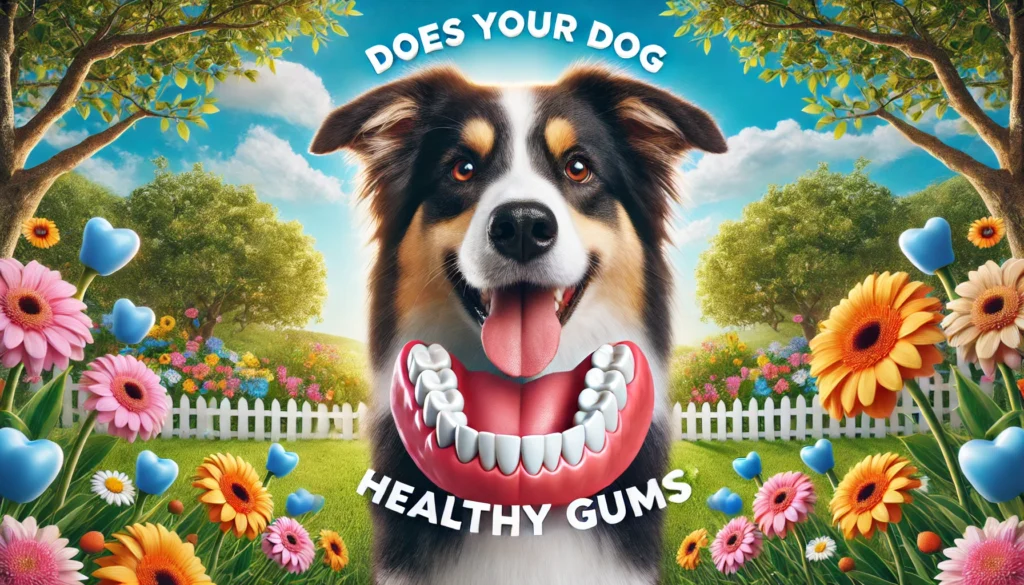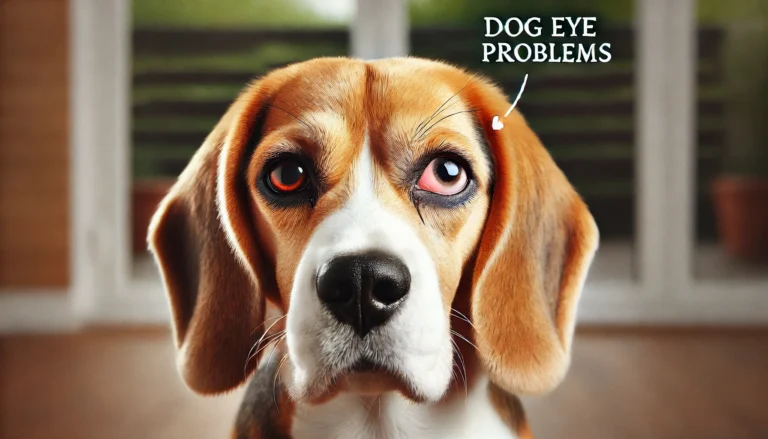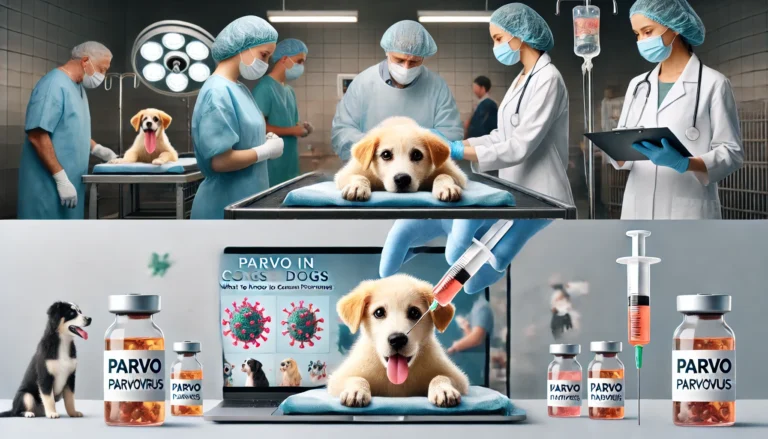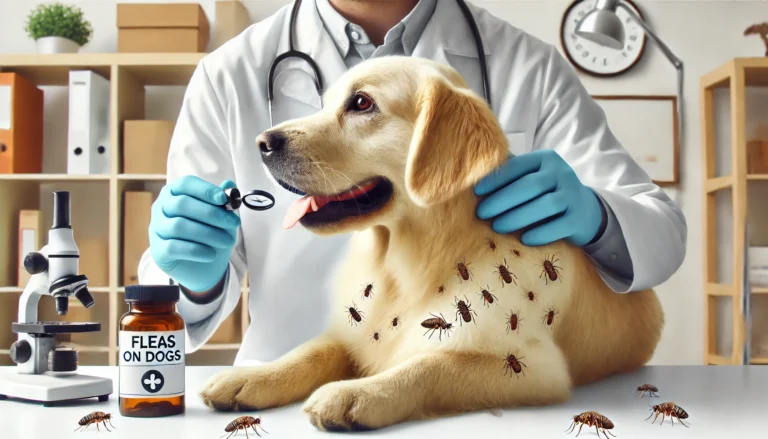Does Your Dog Have Healthy Gums?

Does Your Dog Have Healthy Gums?
THE ANSWER IS!The colour of healthy dog gums varies from dog to dog, but they should generally be a bubble-gum pink or salmon colour. Exploring the critical role gums play in the overall health and longevity of dogs, emphasizing the link between oral health and systemic conditions.
Importance of Gum Health
IF dog have healthy gums is a critical aspect of oral and overall health, often overlooked in discussions about medical well-being. Healthy gums are essential not only for maintaining strong teeth but also for supporting broader health outcomes. This section explores the importance of maintaining healthy gums, the risks associated with gum disease, and effective strategies for gum care.
Signs and Symptoms of Healthy vs. Unhealthy Gums
Characteristics of Dog Have Healthy Gums
Maintaining if dog have healthy gums is as crucial for dogs as it is for humans. Healthy gums in dogs signify good oral health, which is integral to their overall well-being and quality of life. Recognizing the characteristics of healthy gums and understanding how to care for them can help prevent oral diseases that could lead to more serious health issues. Here, we discuss the signs of healthy gums in dogs and provide guidelines on how to maintain them.
Early Warning Signs of Gum Problems
Gum problems in dogs can lead to significant health issues if not addressed promptly. As a pet owner, being vigilant about your dog’s oral health is crucial. Recognizing the early warning signs of gum problems can help you take timely action, potentially saving your dog from pain and more serious complications. Here’s an overview of the early indicators of gum disease and what they might mean for your dog’s health.
Symptoms of Advanced Gum Diseases
Advanced gum disease, or periodontitis, in dogs is a serious condition that can lead to severe health complications if left untreated. It occurs when gingivitis progresses, affecting not just the gums but the deeper supporting structures of the teeth, including the bone. Early detection and intervention are key, but recognizing the symptoms of advanced stages is crucial for preventing irreversible damage. Here’s what to look out for and how to respond to advanced gum disease in dogs.

Preventative Measures for Maintaining dog have healthy gums
Daily Dental Care Routines
A robust dental care routine is as essential for dogs as it is for humans. Establishing daily habits to maintain your dog’s dental health helps prevent gum disease, tooth decay, and can even extend your pet’s lifespan. Here’s a detailed guide on implementing a daily dental care routine for your dog to ensure their teeth and gums remain healthy.
Choosing the Right Dental Care Products
Maintaining your dog’s oral health is vital for their overall well-being. Just as with humans, the right dental care products can make a big difference in preventing dental diseases in dogs, such as periodontitis and gingivitis. Here’s how to choose the best dental care products tailored to your dog’s needs.
Toothbrushes for Dogs
- Type: Dog-specific toothbrushes are designed with softer bristles and angled heads to better fit in a dog’s mouth. Finger brushes are also a great option for dogs as they allow for more controlled brushing and can be less intimidating for your pet.
- Size: Make sure to choose a toothbrush that matches the size of your dog’s mouth. Smaller breeds will require smaller toothbrush heads, while larger breeds need bigger ones to cover more surface area.
Dog Toothpaste
- Enzymatic Toothpaste: Look for enzymatic toothpaste, which contains enzymes that help reduce bacteria and improve oral health. These are specifically formulated for dogs and can help break down plaque and tartar.
- Flavors: Dog toothpastes come in a variety of flavors that are appealing to pets, such as poultry, beef, and peanut butter, which can make the brushing experience more enjoyable for your dog.
Dental Chews and Toys
- Dental Chews: These are designed to help reduce plaque and tartar build-up while also freshening breath. Ensure the chews are appropriate for your dog’s size and chewing strength to prevent any choking hazards.
- Chew Toys: Rubber or nylon toys with nubs and ridges can help clean teeth naturally as your dog chews. Make sure these toys are durable and non-toxic.
Water Additives and Oral Sprays
- Water Additives: These products can be added to your dog’s drinking water to help maintain oral hygiene by reducing plaque and the bacteria that cause bad breath.
- Oral Sprays: Oral sprays for dogs can help reduce plaque and freshen breath quickly. They are particularly useful for dogs that may not tolerate regular brushing well.
Diet for Dental Health
- Dental Diets: Some dog foods are specially formulated to help maintain oral health by reducing tartar build-up. These often feature larger kibble to encourage chewing, which mechanically helps clean teeth.
Consulting with Your Veterinarian
Regular Check-Ups: During routine veterinary visits, ask about professional dental cleanings and other preventive care options.
Professional Recommendations: Always consult with your veterinarian before introducing new dental products into your routine. They can recommend the best products based on your dog’s specific health needs and preferences.
Importance of Regular Veterinary Checkups
Regular veterinary checkups is necessary if dog have healthy gums are vital to maintaining the health and well-being of pets. Just as humans benefit from periodic health assessments, pets, too, need professional medical evaluations to ensure they stay healthy throughout all stages of their lives. These visits are crucial for early detection of potential health issues, prevention of diseases, and maintaining overall health. Here’s why regular veterinary visits are indispensable for your pet.
Nutritional Strategies for Gum Health
Role of Nutrition in Oral Health
Nutrition plays a crucial role in the overall health of dogs, including their oral health. A balanced diet can help prevent dental problems such as plaque buildup, gum disease, and tooth decay, which are common in canines. Understanding how specific nutrients and dietary choices affect your dog’s oral health is key to maintaining their dental wellness. Here’s how proper nutrition impacts oral health in dogs and what you can do to support their dental care through diet.
Essential Nutrients for Dental Health
- Calcium and Phosphorus: These minerals are vital for strong teeth and bones. They help to harden the enamel and support the structure of the jaw. Foods rich in calcium and phosphorus include dairy products, bones (raw or specially prepared bone treats), and high-quality commercial dog foods formulated for dental health.
- Vitamin C: Unlike humans, dogs can produce vitamin C in their bodies, but supplementation can help with gum regeneration and improve the integrity of the periodontal membrane. Foods with natural antioxidants can also be beneficial.
- Crunchy Vegetables and Fruits: Carrots, apples, and celery can act as natural toothbrushes, helping to scrape away plaque from your dog’s teeth. They stimulate the gums and increase saliva production, which aids in cleaning the mouth.
Diet and Dental Health
Dental Diets: Some commercial dog foods are specially formulated to reduce plaque and tartar buildup. These diets are typically designed with larger, more fibrous kibble to encourage chewing, and some contain additives that chemically reduce plaque.
Dry vs. Wet Food: Dry kibble is often recommended for dental health because its abrasive texture helps to keep teeth clean by scraping away soft tartar. However, some dogs may require wet food due to other health issues; in such cases, incorporating dental chews or toys can help maintain dental health.
Foods and Habits to Avoid
Sticky or Sugary Foods: Just like in humans, sugary foods can lead to the buildup of plaque and tartar in dogs. Avoid feeding your dog sugary treats and human foods that can stick to their teeth and promote bacterial growth.
Hard Bones and Antlers: While raw bones can be good for dental health, excessively hard chews like antlers can cause dental fractures. Always supervise your dog with these types of chews and choose products that are appropriate for their size and chewing strength.
Title
Maintaining your dog’s coat health is essential for their overall well-being. This guide explores the risks associated with using human shampoo on dogs, delves into the science behind suitable grooming products, and provides safe alternatives to ensure your dog’s coat remains healthy and vibrant.
Common Dental Issues in Dogs and Their Management
Dental health is a crucial aspect of overall pet care, yet dental issues in dogs are quite common and often overlooked. Recognizing and managing these conditions effectively can greatly enhance your dog’s quality of life and prevent more serious health problems. Here’s an overview of some of the most prevalent dental issues in dogs and how to manage them.
Common Dental Problems in Dogs
- Plaque and Tartar Buildup: Plaque is a film of bacteria that forms on the teeth, which can harden into tartar if not removed. Tartar buildup can lead to gum disease and tooth decay.
- Gingivitis: This is inflammation of the gums caused by plaque buildup. It is characterized by red, swollen gums that may bleed easily.
- Periodontitis: If gingivitis is left untreated, it can advance to periodontitis, a more serious infection that damages the soft tissue and bone supporting the teeth, potentially leading to tooth loss.
- Tooth Decay and Cavities: Although less common in dogs than in humans, dogs can develop cavities due to poor oral hygiene or diet.
- Tooth Fractures: Dogs often fracture their teeth from chewing on hard objects such as bones and toys. Broken teeth are painful and can become infected.
Managing Dental Issues in Dogs
- Regular Dental Checkups: Regular visits to the veterinarian for oral exams and dental cleanings are essential. The vet can professionally remove tartar and check for early signs of dental disease.
- Daily Teeth Brushing: Brushing your dog’s teeth daily with dog-specific toothpaste helps remove plaque and prevent the development of tartar and gum disease.
- Proper Diet: Feeding your dog crunchy dry food can help mechanically clean teeth, while specially formulated dental diets can reduce plaque and tartar buildup. Avoid sugary foods and overly hard chews that can cause tooth damage.
- Chew Toys and Dental Chews: These can help reduce plaque and strengthen gums, but choose items that are safe and effective. Avoid excessively hard chews that can break teeth.
- Dental Treatments and Surgery: For advanced issues like periodontitis or fractured teeth, your vet may recommend specific treatments or surgery. This could include deep dental cleanings under anesthesia, tooth extractions, or even restorative dental work.
Preventive Measures
- Regular Monitoring: Keep an eye on your dog’s dental health by regularly checking their mouth for signs of redness, swelling, bad breath, loose teeth, or changes in eating behavior.
- Educational Resources: Learn about proper dog dental care practices. Many veterinary clinics offer resources or workshops on how to care for your dog’s teeth.
- Water Additives and Oral Rinses: These can be added to your dog’s drinking water or applied directly to the gums and teeth to help reduce bacteria and improve oral health.
Advanced Dental Care and Treatments
As pet owners become more aware of the importance of dental health for their dogs, advanced dental care and treatments have become increasingly important. Beyond basic brushing and regular check-ups, there are sophisticated procedures and care strategies that can significantly improve the oral health of dogs. Here’s a look at advanced dental care and treatments that can address serious dental issues and enhance the quality of life for your canine companion.
Advanced Dental Procedures
- Dental Radiographs (X-rays): X-rays are crucial for diagnosing dental issues that are not visible to the naked eye, such as problems below the gum line including root damage, jawbone decay, and hidden tumors.
- Professional Dental Cleaning: This procedure is performed under anesthesia and goes beyond standard cleaning to include subgingival cleaning (below the gum line), scaling to remove tartar from tooth surfaces, and polishing to smooth the enamel and reduce future plaque build-up.
- Periodontal Therapy: For dogs with periodontitis, treatment may involve deep cleaning around the teeth to prevent further bone loss, application of antibiotics directly into the gum pockets, and even regenerative procedures to encourage the regrowth of bone and tissue.
- Tooth Extractions: Severely decayed or damaged teeth may need to be extracted to prevent the spread of infection and alleviate pain. This procedure is done under anesthesia with post-operative pain management.
- Root Canals: For fractured teeth with exposed pulp, a root canal can save the tooth by removing the damaged pulp and sealing the tooth, which is less traumatic for the dog than an extraction.
Specialized Dental Treatments
- Dental Sealants: Just like in humans, dental sealants can be applied to a dog’s teeth to prevent decay by sealing out food and plaque.
- Orthodontics for Dogs: In some cases, dogs may require braces or other orthodontic devices to correct malocclusions that affect their ability to eat or lead to chronic pain and decay.
- Dental Implants: While less common, dental implants may be used to replace lost teeth in dogs, typically only for very specific functional or health reasons.
Post-Treatment Care
- Follow-Up Visits: After any advanced dental procedure, follow-up visits are crucial to ensure the healing process is proceeding well and to manage any complications that may arise.
- Pain Management: Proper pain management after dental surgery is crucial. Your veterinarian may prescribe pain relievers and anti-inflammatory medications.
- Soft Diet: Following major dental work, a soft or liquid diet may be necessary to allow the dog’s mouth to heal without additional stress from chewing hard foods.
Preventive Measures and Ongoing Care
- Regular Check-Ups: Routine veterinary visits should include dental assessments to catch potential problems early.
- Continued Home Care: Regular brushing and the use of dental health products like water additives and specially formulated foods can help maintain dental health after treatment.
- Education and Awareness: Understanding the signs of dental distress and knowing when to seek veterinary help can prevent more severe health issues.
CONCLUSION
In conclusion, maintaining healthy gums is crucial for your dog’s overall well-being and oral health. Regularly checking your dog’s gums for signs of healthiness—such as a firm, consistent pink color without swelling or bleeding—is essential. Unhealthy gums can manifest as redness, swelling, or a receding gum line, and these issues can lead to more serious health problems if not addressed promptly. Implementing a routine of daily dental care, including brushing and providing appropriate chew toys and dental treats, along with regular veterinary check-ups, will help ensure your dog’s gums and teeth stay healthy.
Are my dog’s gums healthy?
To determine if your dog has healthy gums, assess the color and texture. Healthy gums in dogs should be a uniform pink or carry a slight pigmentation depending on the breed, but they should not show signs of redness or swelling. They should be firm and snap quickly back in place if gently pulled. Healthy gums are crucial because they support the teeth and are indicative of good overall health.
Does my dog have healthy teeth?
Healthy teeth and gums are integral to your dog’s overall health. To evaluate if your dog has healthy teeth, look for clean, white teeth without brown or yellow tartar build-up. There should be no signs of chips, cracks, or wear that seem abnormal. The teeth should be firmly planted in the gums without any loose motion.
What do good dog gums look like?
Good dog gums are clean, firm, and uniformly colored without any patches of discoloration or visible signs of irritation. They are typically a healthy shade of pink, although some breeds may have naturally pigmented gums. These gums are indicative that your dog have healthy gums and is free from oral diseases. It’s important that the gums have no signs of swelling, bleeding, or receding away from the teeth as these can be indicators of gum disease.
How to check a dog’s gums?
Checking your dog have healthy gums regularly is essential for monitoring their oral health. Gently lift the lips to expose the gums, ensuring you view both the front and back teeth. Healthy gums should be pink, firm, and should not bleed when touched. If your dog have healthy gums are white, blue, or an excessively deep red, it could indicate health issues. While examining, also check for any signs of swelling or lesions, which could be problematic. If the texture of the gums feels overly soft or hard compared to normal, or if you notice any abnormalities, consult your veterinarian for a thorough examination.
What do healthy gums look like?
Healthy gums are a key indicator of good oral and overall health in dogs. They should appear pink, be firm to the touch, and not display any signs of redness, swelling, or bleeding. Such characteristics suggest that your dog have healthy gums, which help support strong teeth and ward off potential infections.
Should gums be soft or hard?
Dog have healthy gums should be neither too soft nor too hard; they should have a consistent, firm texture. Soft gums might be a sign of a lack of dental hygiene or a potential dental disease. On the other hand, dog have healthy gums that are too hard may be an indicator of dehydration or other health issues. Regular monitoring and maintaining a routine dental care schedule are crucial for ensuring that your dog has healthy gums.
How to know if gums are healing?
To determine if your dog have healthy gums are healing, look for an improvement in color and texture. Healing gums will show reduced signs of redness and swelling, and they should stop bleeding when gently probed. The return to a normal, healthy pink color is a positive sign that the gums are recovering.
What are examples of unhealthy gums?
Unhealthy dog have healthy gums can manifest in several ways, which are crucial to notice early to maintain overall health. Examples of unhealthy gums include those that are overly red, swollen, bleed easily, or have a pale, white, or blue tint. These symptoms can indicate conditions such as gingivitis, periodontitis, or systemic health issues. Unhealthy gums may also recede, exposing more of the tooth than normal, which can lead to sensitivity and pain.






